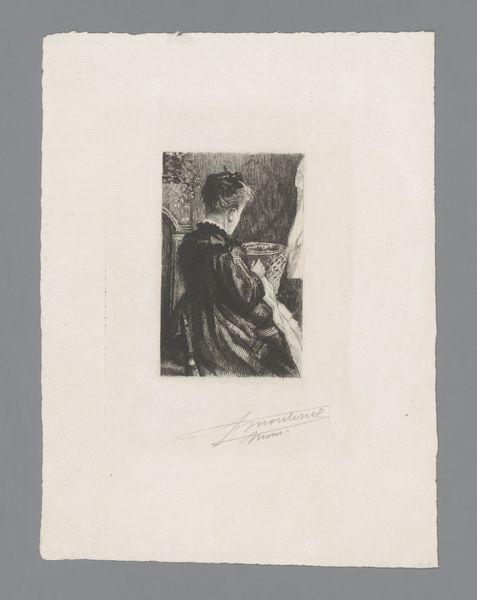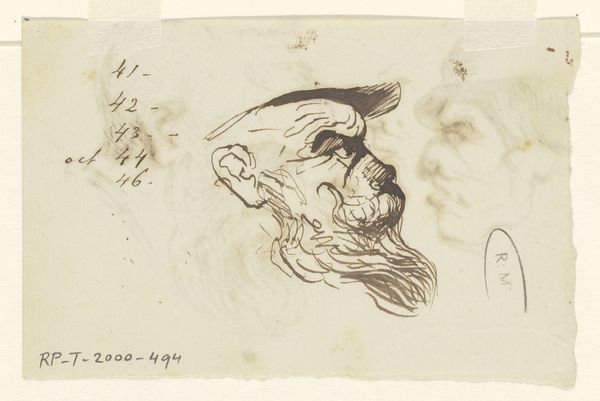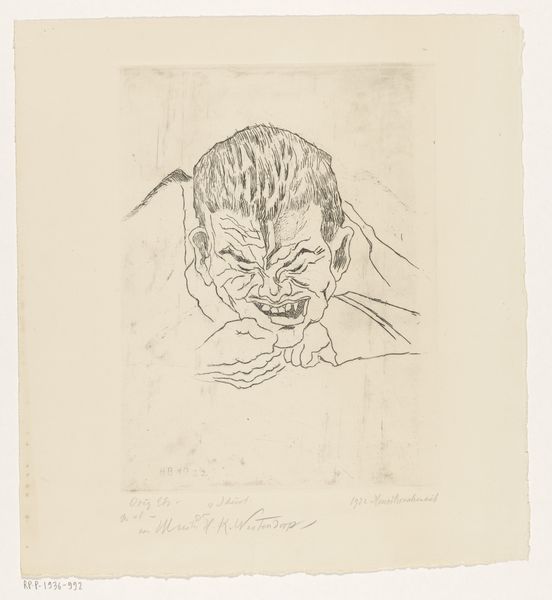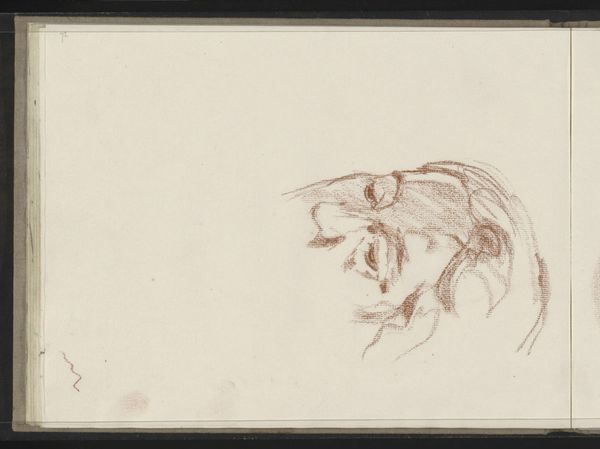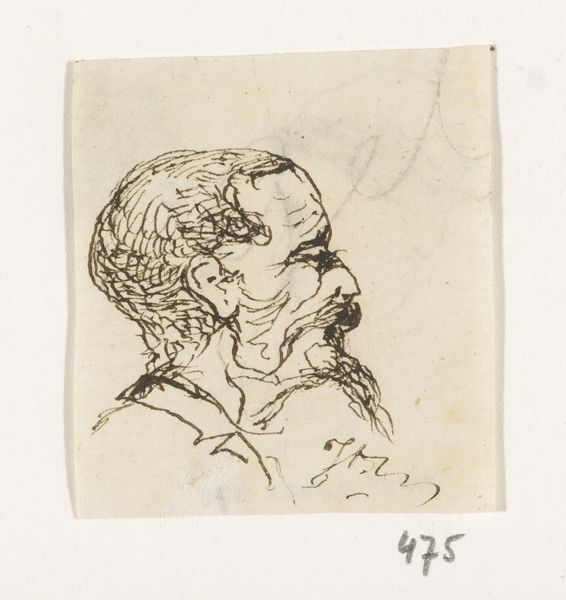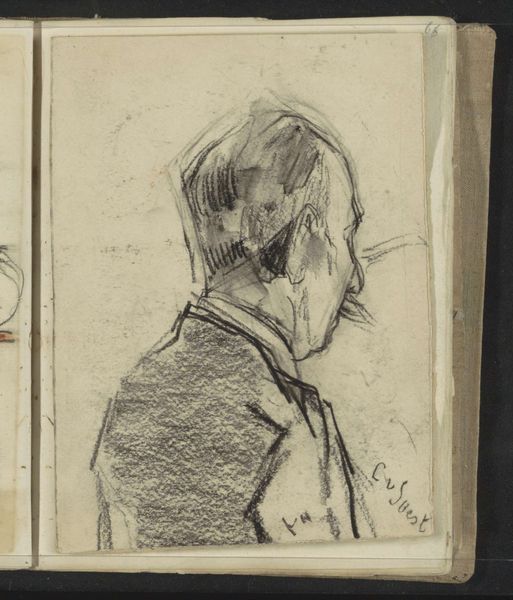
drawing, ink, pen
portrait
drawing
pen illustration
ink line art
ink
line
pen
Dimensions: height 42 mm, width 77 mm
Copyright: Rijks Museum: Open Domain
Editor: Here we have Johannes Tavenraat's "Kop," made with pen and ink around 1870. It's a striking profile. The rough lines give it a real sense of immediacy. What story do you think this work is trying to tell us? Curator: I see a fascinating glimpse into 19th-century Dutch society, perhaps even a commentary on class. The figure’s prominent nose and somewhat caricatured features were common in popular imagery and sometimes used to reinforce stereotypes. Does the way the figure is dressed remind you of any specific social groups or occupations? Editor: Maybe a fisherman? The hat feels practical, like it would offer protection from the elements. Curator: Exactly. Think about the social position of fishermen during that time. Were they idealized figures, or were they often seen as 'other'? Visual representations like this one, displayed in museums and prints, contributed to and shaped the perception of these communities. How do you think the artist's choices of line and shading affect our reading of the figure's character? Editor: The heavy lines definitely give him a world-weary feel, maybe even a hint of being worn down by hard labor. Curator: Precisely! And that raises a question: is the artist sympathizing with this figure, or is he perpetuating existing social biases? These images played a role in constructing collective memory. What do you make of that now? Editor: It’s interesting to think about how a simple drawing could be more than just a portrait. I’m starting to see how art reflects the culture around it, for better or worse. Curator: Indeed! Art is never created in a vacuum. Studying the social and historical contexts, as we've done, provides invaluable insight, even into what might appear to be just a quick sketch. It makes you think about representation so differently.
Comments
No comments
Be the first to comment and join the conversation on the ultimate creative platform.
